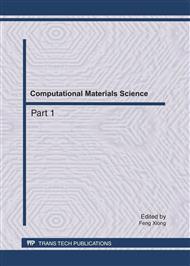p.428
p.434
p.440
p.446
p.450
p.454
p.458
p.462
p.467
An Evaluation of the Soil and Water Conservation Benefit in Nanzheng County
Abstract:
According to some statistical surveys and data about the land from the year 1984 to 2004, here’s an analysis on where the financial investment in soil and water conservation comes and goes in tins district. In conclusion, after the actions in improving the soil and water, there’s an obvious decent in the flow rate of the channel’s interior diameter as well as the amount of soil erosion, a rise in vegetation coverage, and some improvement in ecological environment together with a great improvement to the natives’ living standard.
Info:
Periodical:
Pages:
450-453
Citation:
Online since:
July 2011
Authors:
Price:
Сopyright:
© 2011 Trans Tech Publications Ltd. All Rights Reserved
Share:
Citation:


